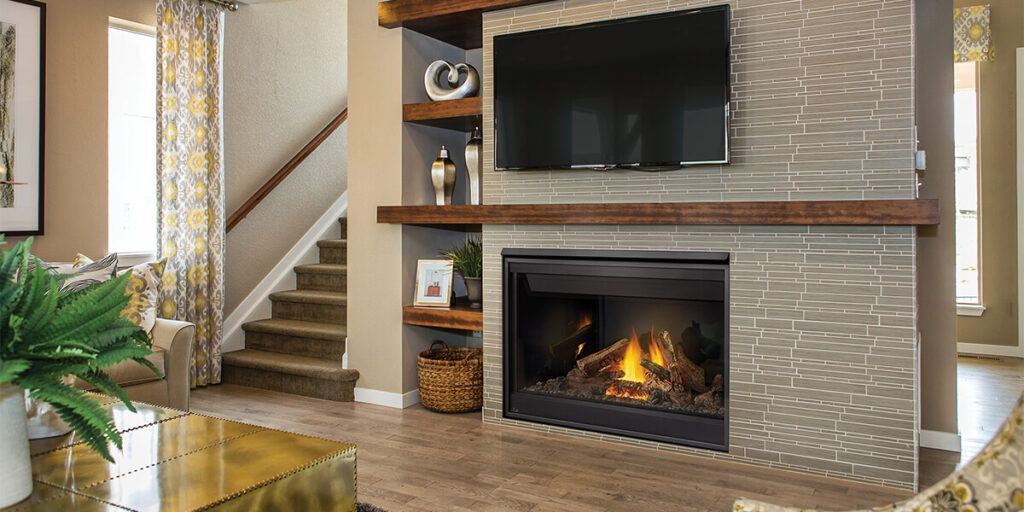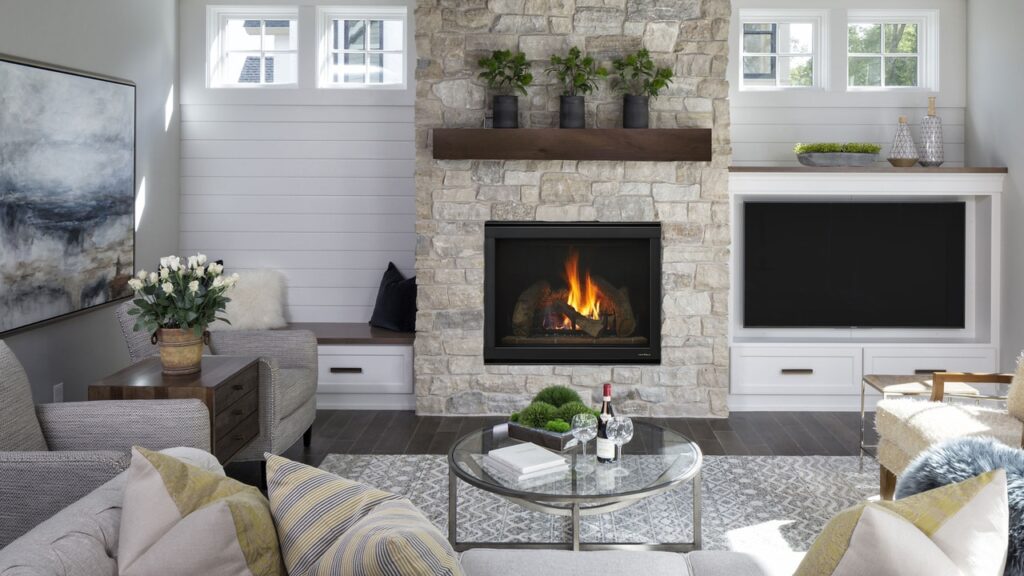Blog
How to Choose the Right Gas Fireplace for Your Home
A gas fireplace is a stylish, efficient, and convenient way to bring warmth and ambiance into your home. With a wide variety of designs, sizes, and features available, finding the perfect gas fireplace can feel overwhelming. Whether you’re upgrading an old fireplace, adding a new feature to your home, or replacing your heating system, selecting the right gas fireplace involves understanding your needs, preferences, and installation requirements.
This comprehensive guide will walk you through how to choose the right gas fireplace for your home, including the types available, key features to consider, and tips to ensure you make the best decision.
Why Choose a Gas Fireplace?

1. Instant Warmth
Gas fireplaces provide heat with just a flip of a switch or push of a button, making them incredibly convenient.
2. Energy Efficiency
Modern gas fireplaces are highly efficient, using less energy than traditional heating methods while still delivering reliable warmth.
3. Low Maintenance
Unlike wood-burning fireplaces, gas fireplaces produce no ash, soot, or creosote, making them easier to clean and maintain.
4. Stylish Designs
Gas fireplaces come in a variety of styles, from traditional to modern, allowing you to enhance your home’s aesthetic.
5. Versatility
With vented and ventless options, gas fireplaces can be installed in virtually any room, regardless of whether you have an existing chimney.
Types of Gas Fireplaces
1. Direct Vent Gas Fireplaces
- How They Work:
- These fireplaces vent combustion gases directly outside through a wall or roof.
- They draw in outside air for combustion, ensuring indoor air quality.
- Benefits:
- Highly efficient and safe for homes.
- Sealed combustion keeps heat inside the room.
- Best For: Homes where a venting system can be installed.
2. Ventless (Vent-Free) Gas Fireplaces
- How They Work:
- Burn gas cleanly without the need for venting or a chimney.
- Heat stays entirely in the room for maximum efficiency.
- Benefits:
- Flexible installation options—can be placed anywhere with a gas line.
- More heat output since no warmth is lost through venting.
- Considerations:
- May produce small amounts of moisture and carbon monoxide; proper ventilation is recommended.
- Best For: Homes without existing chimneys or venting systems.
3. Gas Fireplace Inserts
- How They Work:
- Installed inside an existing wood-burning fireplace, converting it to gas.
- Benefits:
- Cost-effective way to upgrade an old fireplace.
- Retains the traditional look while adding modern convenience.
- Best For: Homeowners with unused or outdated wood-burning fireplaces.
4. Freestanding Gas Stoves
- How They Work:
- Stand-alone units that operate independently of walls or mantels.
- Benefits:
- Portable and flexible placement.
- Provides both heating and aesthetic appeal.
- Best For: Small rooms or homes without existing fireplaces.
5. See-Through Gas Fireplaces
- How They Work:
- Dual-sided fireplaces that are visible from two areas.
- Benefits:
- Acts as a stylish room divider while heating multiple spaces.
- Best For: Open-concept designs or connecting indoor and outdoor spaces.
Key Features to Consider
1. Heating Efficiency
- Look for models with high BTU ratings if you want to heat larger spaces.
- Check the AFUE (Annual Fuel Utilization Efficiency) rating for energy efficiency.
2. Flame Adjustability
- Many models allow you to control the height and intensity of the flames, letting you customize the ambiance.
3. Thermostatic Control
- Built-in thermostats automatically adjust the heat to maintain a consistent room temperature.
4. Remote and Smart Controls
- Control your fireplace with a remote, smartphone app, or smart home system for added convenience.
5. Realistic Logs and Media
- Enhance the aesthetic with ceramic logs, glass crystals, or stones that mimic the look of traditional fireplaces.
6. Safety Features
- Look for models with oxygen depletion sensors, auto shut-off, and cool-to-touch exteriors.
Choosing the Right Size Gas Fireplace

1. Measure Your Room Size
- Determine the square footage of the room where the fireplace will be installed.
- Smaller rooms (up to 400 sq. ft.) require lower BTU outputs, while larger spaces (over 1,000 sq. ft.) need higher BTUs.
2. Choose the Right Heat Output
- Low BTU (10,000–15,000): Ideal for bedrooms, bathrooms, or smaller spaces.
- Medium BTU (15,000–30,000): Suitable for living rooms or dining areas.
- High BTU (30,000+): Best for open-concept spaces or large rooms.
Venting Options: What You Need to Know
1. Chimney Requirements
- Direct vent fireplaces may require a chimney or venting system to exhaust combustion gases.
- Ventless models eliminate the need for a chimney, offering more flexibility.
2. Wall or Roof Venting
- Consider the placement of exterior walls or roofs for vented models.
- Professional installation is recommended to ensure proper venting.
Installation Considerations
1. Gas Line Access
- Ensure you have an existing gas line or plan for installation.
- A licensed professional should handle gas line connections.
2. Placement
- Decide where you want the fireplace—against a wall, in a corner, or as a room divider.
- Consider proximity to furniture and decor for safety and aesthetics.
3. Professional Installation
- Direct vent and ventless fireplaces often require professional installation to meet safety standards and local codes.
Tips for Choosing the Right Gas Fireplace
- Assess Your Needs:
- Are you looking for supplemental heat, ambiance, or both? Understanding your primary goal will help narrow your choices.
- Match Your Style:
- For traditional interiors, choose models with brick panels, mantels, and ceramic logs.
- For modern spaces, opt for frameless designs or glass media.
- Set a Budget:
- Gas fireplaces range from $1,000 to $5,000 or more, depending on size, features, and installation requirements.
- Consider Long-Term Maintenance:
- Regularly clean the glass and have the gas lines inspected to ensure safety and efficiency.
Top Gas Fireplaces for Your Home
1. Napoleon Ascent Series Gas Fireplace
- Type: Direct vent.
- Features:
- Realistic ceramic logs and customizable flames.
- High-efficiency heating with optional decorative surrounds.
- Why It’s Great: Combines traditional aesthetics with modern convenience.
2. Heat & Glo SlimLine Gas Fireplace
- Type: Direct vent.
- Features:
- Minimalist design with slim dimensions.
- Smart controls for precise heat management.
- Why It’s Great: Perfect for contemporary spaces with limited installation depth.
3. Empire Tahoe Vent-Free Gas Fireplace
- Type: Ventless.
- Features:
- High-efficiency heating with realistic flame effects.
- Compact design suitable for small rooms.
- Why It’s Great: A flexible option for homes without chimneys.
4. Regency Horizon Gas Fireplace
- Type: See-through.
- Features:
- Dual-sided design for open-concept layouts.
- Glass media and customizable flame effects.
- Why It’s Great: Adds elegance to both modern and transitional spaces.
Conclusion
A gas fireplace is a versatile and stylish way to enhance your home’s warmth and ambiance. By considering factors such as venting options, heat output, style, and safety features, you can find the perfect fireplace to match your needs and preferences.
Explore the models and tips in this guide to make an informed decision. Shop now and transform your living space with a gas fireplace that combines functionality, efficiency, and timeless charm!


